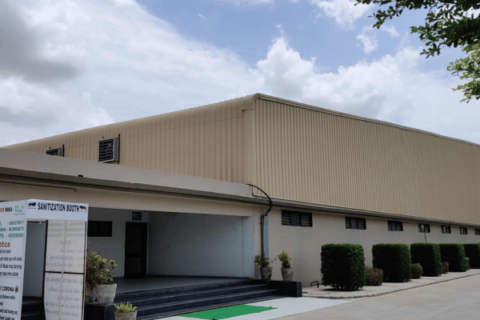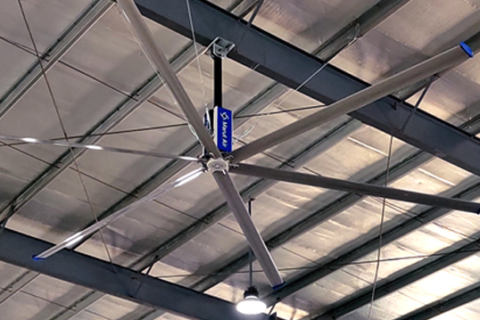The Unsung Heroes of Workplace Health: Decoding Industrial Ventilation Tools
Imagine a bustling factory floor which is filled with complex machinery, high temperatures, and unavoidable byproduct of industry with fumes, dust, and airborne particulates. These are considered normal, but such invisible hazards can be silent threats to worker health, productivity, and even the safety of the facility.
An industrial ventilation system can ensure a safe and healthy working place for workers. With a proper ventilation at the workplace, it becomes easy to control the exposure to potential hazardous airborne contaminants. Some hazardous airborne contaminants are temperature regulation and comfort for workers. This blog is all about some of the tools used and necessary equipment required for effective industrial ventilation systems.
Industrial ventilation systems are most important that transform a polluted environment into a safe workspace. These systems are not only about large fan in a wall, they are a sophisticated network of specialized components. All the components play an important role.
From Centrifugal Fan that moves massive volumes of air to Local Exhaust Ventilation and Air Quality Sensor, the tools of industrial ventilation are the unsung heroes of workplace health. By understanding such key components, their function, and interaction is important of you want to maintain the optimal balance of air quality, temperature, and pressure which are crucial for a healthy industrial setting.
Industrial air pollution is one of the most common causes of health concern among workers in industries. While the buildup of toxic fumes and particulate matter is unpreventable due to the production process, the health hazard can be prevented by using tools for industrial ventilation to create a safe work environment. These industrial ventilation tools work by removing the contaminated indoor air. Most of these tools include mechanical tools like fans and blowers.
Essential Tools for Industrial Ventilation
An industrial ventilation system is crucial in ensuring a safe and healthy working place for workers. Proper ventilation at the workplace controls exposure to potential hazardous airborne contaminants, such as temperature regulation and comfort for workers. In this blog, we will discuss some of the tools used and some of the necessary equipment required for effective industrial ventilation systems.
What is the Role of Smart Ventilation in Reduced Energy Consumption?
The role of Smart Ventilation in reducing energy consumption is vital. Smart ventilation technologies have become a game changer in reducing energy consumption and improved air quality. Such systems employ latest IoT sensors that can be beneficial in tracking air quality in real time and adjust fan speeds, airflow, and temperature to optimize the energy usage. Let us understand this concept with an example, if the air quality improves, the system reduces airflow to save energy. It can reduce operational costs and decreases the carbon footprint of the facility that can contribute to environmental sustainability.
List of common tools for industrial ventilation
1) Centrifugal Fans
Other industrial usage comes from centrifugal fans, mostly due to moving large volumes of air against considerable resistance. It is best suited for applications where high pressure is needed and can be found in many dust collection systems as well as fume extraction setups.
2) Axial Fans
Axial fans are designed to blow air in line. However, axial fans are designed for applications working under lower pressures. They suit all large-space ventilation and are normally used in areas like warehouses or factories.
3) Ventilation Control Systems
Controlled automated ventilation systems have the added advantage of sensor devices, which monitor the condition of air and prevent it from deterioration through modification based on specific conditions. They can also be combined with devices that can sense pollutants, temperature, and humidity, thus maintaining maximum quality of air while optimally using energy.
4) Exhaust Fans
Exhaust fans are very crucial in workplaces where dangerous products are being handled, such as laboratories and manufacturing industries. They eliminate, at source, fumes, vapors, and airborne particulate from workers’ space to reduce exposure.
5) Make-up Air Units
Makeup Air Units admit fresh outside air into the building to counteract the amount removed by exhaust systems. It is crucial in very tight buildings where the indoor air quality can deteriorate rapidly. MAUs prevent negative air pressure that would cause air quality inside to be a problem.
6) Air Quality Monitors
Real-time monitoring of air quality gives an assurance of a healthy environment. These systems will detect VOCs, particulate matter, carbon dioxide, and many other air pollutants. Adjustments can then be made with respect to those data from the monitors concerning the ventilation system.
7) Personal Protective Equipment
Although ventilation systems would serve to effectively control exposure from airborne contaminants, PPE shall always be needed to protect workers. Included in this are respirators, masks, and goggles, among others, that shall be used in concurrence with ventilation systems like exhaust fans, centrifugal fans, and axial fans in higher-risk areas.
Conclusion
Only proper industrial ventilation can be possible if industries use the various tools and technologies that suit a specific workplace. Investment in the right equipment, with proper upkeep, will permit businesses to build a better environment for employees. Contact Marut Air for an industrial ventilation system that enables you to become a more efficient and safer operator.
Frequently Asked Questions for Commonly Used Tools For Industrial Ventilation:
Question 1. What are the main devices required to move air in an industrial ventilation system?
Answer. The primary tools for moving air in an industrial ventilation system are Centrifugal fans and axial fans. Centrifugal fans are used for high pressure applications, such as dust collection. Axial fans are used to move larger air volumes at lower pressure which make them suitable choice for general factory air.
Question 2. What equipment is important to remove airborne contaminants at the source?
Answer. Local Exhaust Ventilation systems are important as they consist of a capture hood or inlet, ductwork, and an air cleaning device which is connected to an exhaust fan to trap pollutants near their origin.
Question 3. What is the main purpose of an Air Quality Monitor in this setting?
Answer. An air quality monitor uses sensors to continuously check for airborne contaminants. It can ensure that ventilation systems maintain a healthy and safe environment for workers.
Question 4. What are the other key component vital for maintaining indoor air quality, beyond fans and ducts?
Answer. Make-up air units are important as they introduce tempered, filtered fresh air to replace the air removed by exhaust systems. These units can prevent negative pressure and ensure the proper functioning of the system.





